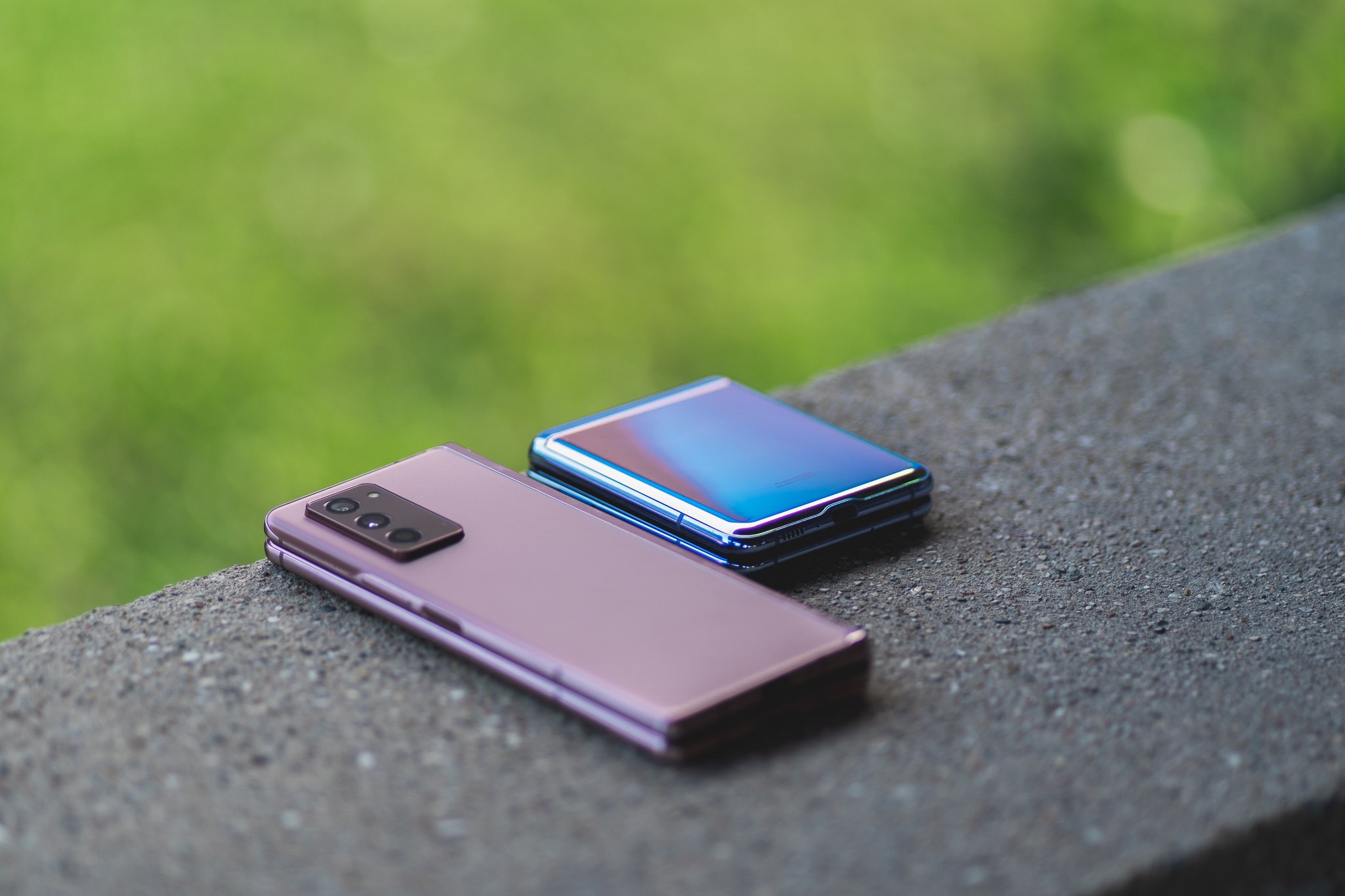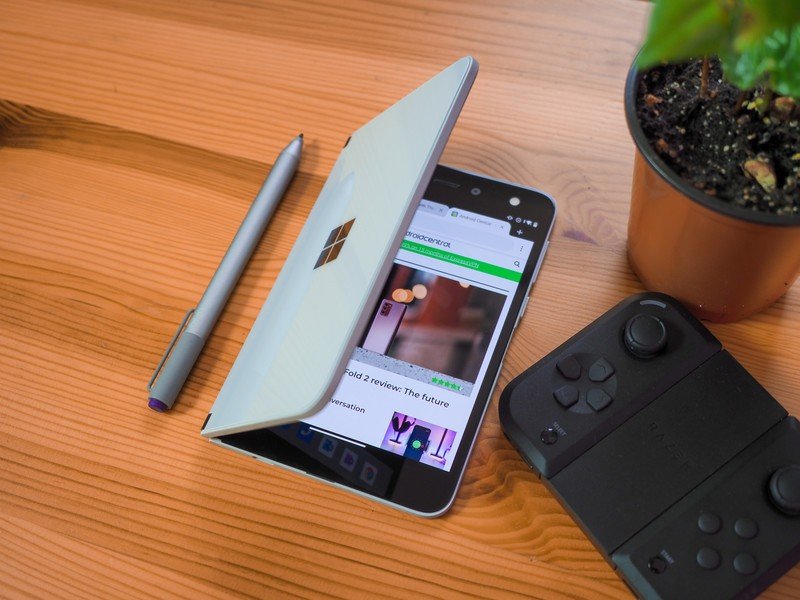Why 2020 was the year of weird phones

It's a common refrain: Smartphones are a commodity. Even the best Android phones are boring. There's nothing more that can be done to the standard slab-shaped phone to make it any more performant or interesting or useful for the average person.
Yet in 2020, we saw an influx of novel and experimental designs that pushed the boundaries of mobile technology. With smartphones being most people's primary computer, the outer fringes of mobile tech demonstrated how it was possible to deliver more screen space and unique experiences in a device that could still fit inside your pocket. In other words, there's still more that a pocket-sized computer can do for you in 2020 compared even to a couple of years ago.
Today's imperfect, experimental foldables are the start of a multi-screen revolution.
And although few of them were perfect, the weird phones of the past year have proven that point.
The most visible category in this cutting-edge space has been foldables, where Samsung has been dominant. The Galaxy Z Flip showed how it's possible to fit a normal-sized smartphone into an even smaller physical space. And the Galaxy Z Fold 2 showed that a standard-sized smartphone footprint could, thanks to emerging technologies, give you a tablet-level experience that could still fit inside your pocket. Given time, that kind of experience seems almost certain to supplant smaller tablets like the iPad Mini.
This kind of innovation doesn't come cheap, though. The aforementioned Samsung foldables rank among the most expensive handsets of 2020, even with recent discounts. And on the Motorola side, the recent Razr phones, with their mid-range specs, carry a significant premium over comparable devices that don't fold in half. But they do show that we're a long way from reaching the ceiling of mobile innovation — phones aren't boring just yet. And if the leaks and rumors are to be believed, many of the major players in mobile tech know that these novel form factors represent the future of the high-end mobile industry.
Foldable displays are a major part of this trend, but we've also seen other form factors emerge over the past twelve months, as manufacturers look to expand the possibilities for pocket-sized screens.
Take the LG Wing, for instance. While the software of that device is far from perfect, it shows how hardware innovation can enable new user experiences. On the average Android phone, you'd have to rely on picture-in-picture support to watch video and use apps in the background. On the Wing, you have two viewports on which to view apps and content — in a device which, although bulky, still easily fits in your pocket. Although the software experience is far from ideal — in part due to the limitations of Android itself — the hardware shows how a premium one-handed, dual-screen experience might work.
Be an expert in 5 minutes
Get the latest news from Android Central, your trusted companion in the world of Android

The same applies to Microsoft's Surface Duo, another of the more unusual handsets of 2020. Despite the software giant's efforts to work with Google on its dual-screen capabilities, bugs and performance issues plagued the device's launch. Nevertheless, this passport-sized phone demonstrates the power of a dual-screen Android experience. Even without a cover display or dedicated selfie camera, the Surface Duo replicates a large part of the laptop experience, with two discrete display areas that can link up in certain circumstances.
The fact that recent Android platform releases have focused on dual-screen compatibility shows that Google itself is well aware of the importance of foldables and dual-screen handsets. Google has been working on native foldable support since the earliest days of Android 10. And while current dual-screen phones may be limited, expensive and imperfect, they're paving the way for the flagship devices of the future. No surprise, then, that there's a foldable Google Pixel rumored for launch in late 2021.
Single-screen phones may seem boring, but the multi-screen revolution is only just beginning.
You could easily argue that the traditional slab-shaped smartphone, in terms of a design problem, is basically solved. Sure, you can fit in bigger batteries, more cameras, faster refresh rates, but ultimately little is going to change for the traditional candybar cellphone experience over the next few years. After you figure out how to eliminate screen bezels and put your selfie camera under the display, only then do you get to the real technical challenges.
How do you offer standard smartphone features like wireless charging and water resistance in a device that folds in half? And what about durability, an area where anything with a hinge seems to have an automatic disadvantage? Solutions are sure to be found, but they won't be cheap or easy.
That's where the weirdo phones of 2020 come in. By experimenting with unusual form factors, companies like Samsung, LG and Microsoft will help us uncover the flagships of the future, beyond simple slab-shaped handsets.
This is why I'd expect the enthusiast segment of the smartphone market to shift almost entirely towards foldables and dual-screen phones in the coming years. When you've perfected the leaflet-sized screen in your pocket, what's next is figuring out how to keep everything that's great about a high-end smartphone while also offering the benefits of a tablet display that can fit in your pocket. Maybe that's a plastic OLED that folds in half. Maybe it's two traditional phone displays with a tiny hinge in between. The way you figure that out is by developing and shipping phones that perhaps aren't perfect, but offer a glimpse of our inevitable multi-screen future.
So while I wouldn't necessarily want to deal with the compromises of the LG Wing or Surface Duo today, I can appreciate that these phones are pushing the boundaries of what's possible with mobile tech. And when we look back, in five or ten years time, I think we'll point to the weirdo phones of 2020 as the starting point of the dual-screen mobile revoltuion.

Alex was with Android Central for over a decade, producing written and video content for the site, and served as global Executive Editor from 2016 to 2022.
